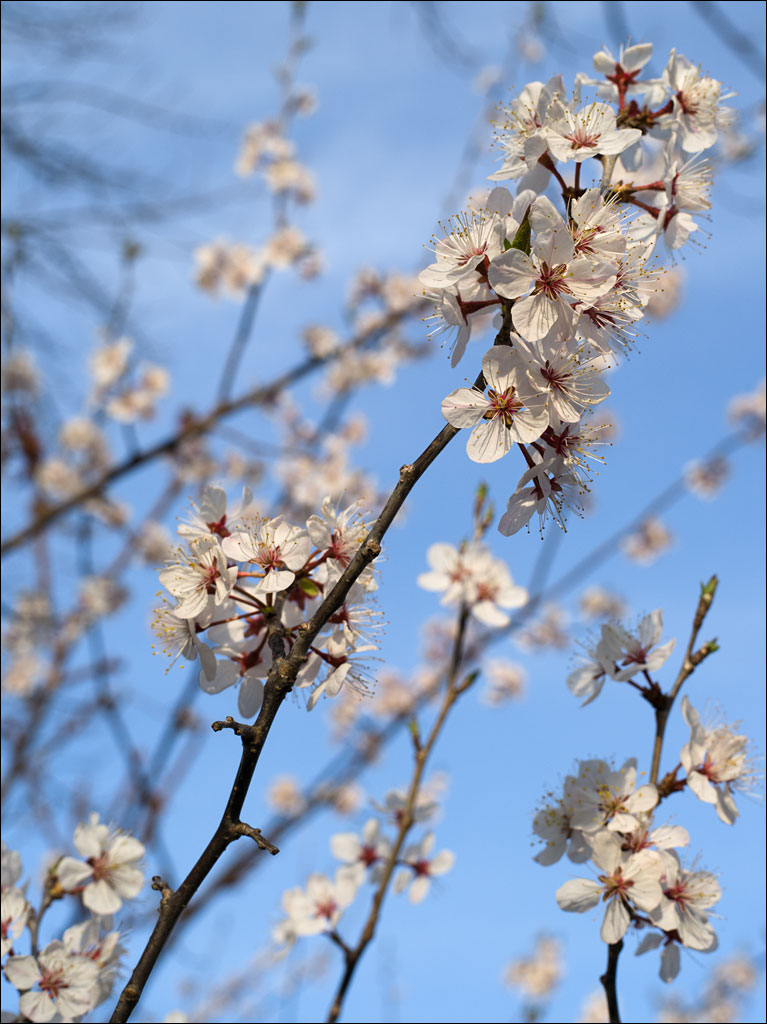 We wish you a wonderful May Day. We are usually greeted by our wild plum blossoms at the beginning of May, but apparently we will have to wait a little longer this year. We hope your day is bright, warm, and full of flowers. Click on the image for a larger view.
We wish you a wonderful May Day. We are usually greeted by our wild plum blossoms at the beginning of May, but apparently we will have to wait a little longer this year. We hope your day is bright, warm, and full of flowers. Click on the image for a larger view.
Tag Archives: Spring in Maine
Awaiting Spring
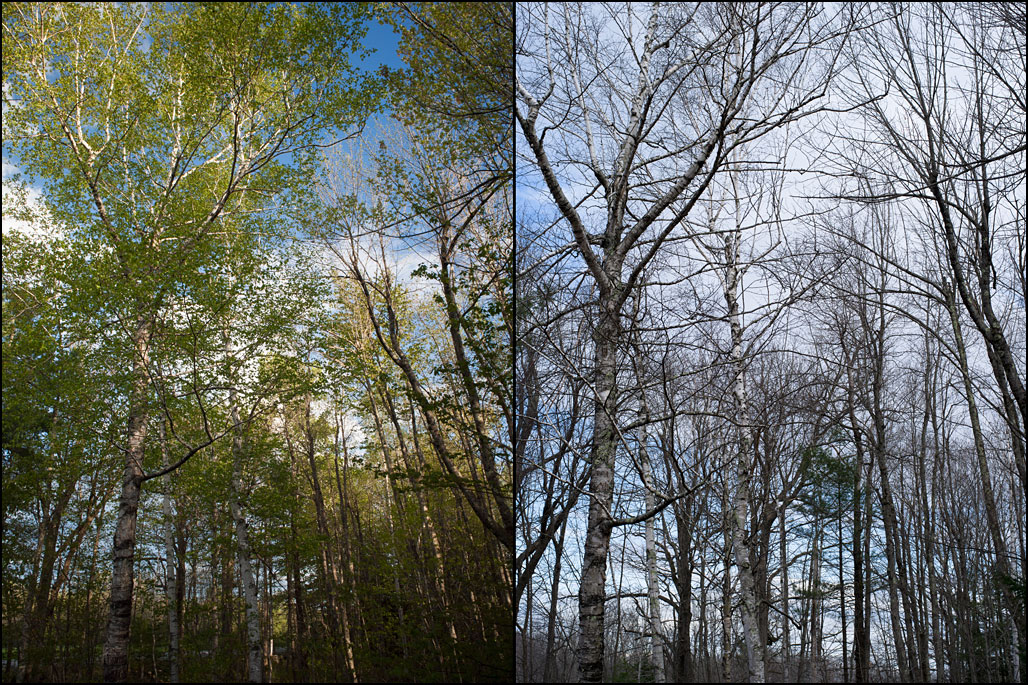 This has been a long, hard winter (globally, this March was the fourth hottest on record, while the eastern US sat in unusual cold). The image on the left was taken in our woods on May 3rd, 2010. The picture on the right was taken in the same place last Sunday, April 27th. May 3rd is this Saturday. While I would not be disappointed in a miracle that could transform our woodland into something that looks like the first image, I am also not very hopeful. I am more inclined to think it will snow. Click on the image for a larger view.
This has been a long, hard winter (globally, this March was the fourth hottest on record, while the eastern US sat in unusual cold). The image on the left was taken in our woods on May 3rd, 2010. The picture on the right was taken in the same place last Sunday, April 27th. May 3rd is this Saturday. While I would not be disappointed in a miracle that could transform our woodland into something that looks like the first image, I am also not very hopeful. I am more inclined to think it will snow. Click on the image for a larger view.
This Year’s Tomatoes
 We are going through the annual ritual of starting the garden. With the short Maine summer and unpredictable spring, many plants need a little help. With about one hundred tomato plants, it gets crowded in the house as they grow and need replanting. However, it is well worth the effort as they give us a year’s supply of their wonderful fruit. Click on the image for a larger view.
We are going through the annual ritual of starting the garden. With the short Maine summer and unpredictable spring, many plants need a little help. With about one hundred tomato plants, it gets crowded in the house as they grow and need replanting. However, it is well worth the effort as they give us a year’s supply of their wonderful fruit. Click on the image for a larger view.
Hard Cider
 This weekend we bottled our hard cider. We made seven and a half gallons or twenty-eight liters, which we store in half-gallon jugs. That should last the year.
This weekend we bottled our hard cider. We made seven and a half gallons or twenty-eight liters, which we store in half-gallon jugs. That should last the year.
We start in the fall with sweet cider pressed at the hight of apple season. We are able to get the juice without any preservatives. We simply add sugar or honey for primary fermentation and then use uncoated raisins for the secondary fermentation. Depending on the flowers the bees feed from, the honey can impart a subtle fragrant flavor. Most raisins are coated with oil to prevent them from sticking together, but the oil will contaminate the cider—uncoated raisins are tricky to find. We make a single batch in a nine-gallon container, but we have also used one-gallon glass jugs.
Spring Floods
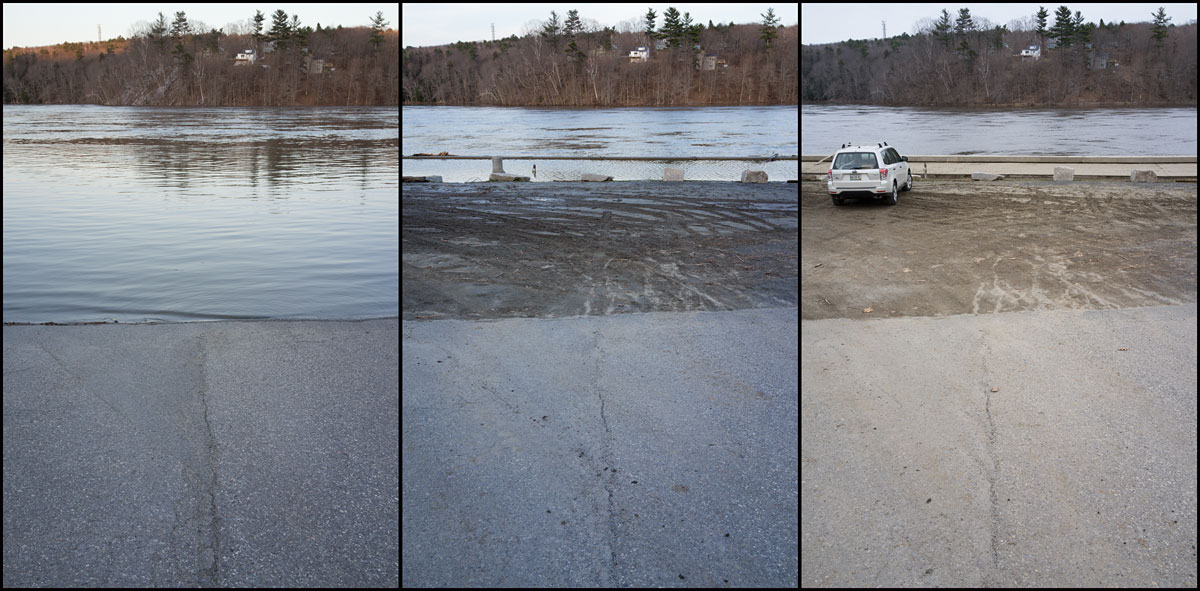 From Tuesday to Wednesday last week, a huge storm passed through Maine. With the snow melt and the saturated ground, water has few places to go. Hallowell, a small town on the Kennebec River, was one of the places effected. For three consecutive evenings from the river cresting on Wednesday, I photographed the receding water. During the summer, the wharf at the edge of the river is eight to ten feet above the water. Click on the image for a larger view.
From Tuesday to Wednesday last week, a huge storm passed through Maine. With the snow melt and the saturated ground, water has few places to go. Hallowell, a small town on the Kennebec River, was one of the places effected. For three consecutive evenings from the river cresting on Wednesday, I photographed the receding water. During the summer, the wharf at the edge of the river is eight to ten feet above the water. Click on the image for a larger view.
A Year in Color, a Year of Color
Early Spring, Part 2
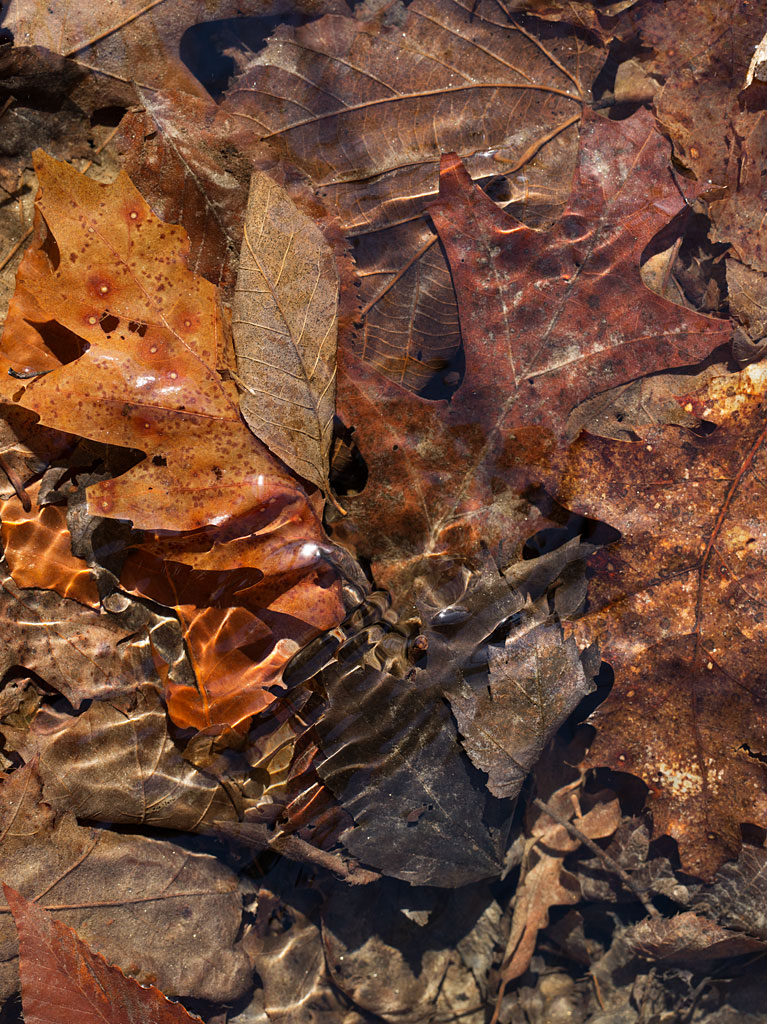 The forest floor is a layer of flat, matted leaves; it has none of the thick, plush quality of the fall. With the melting snow and spring rains, vernal pools and streams cover a large area of our understory. The water is clear as glass. Once the foliage returns, the pools and streams are soaked up by the trees. Click on the image for a larger view.
The forest floor is a layer of flat, matted leaves; it has none of the thick, plush quality of the fall. With the melting snow and spring rains, vernal pools and streams cover a large area of our understory. The water is clear as glass. Once the foliage returns, the pools and streams are soaked up by the trees. Click on the image for a larger view.
Early Spring, Part 1
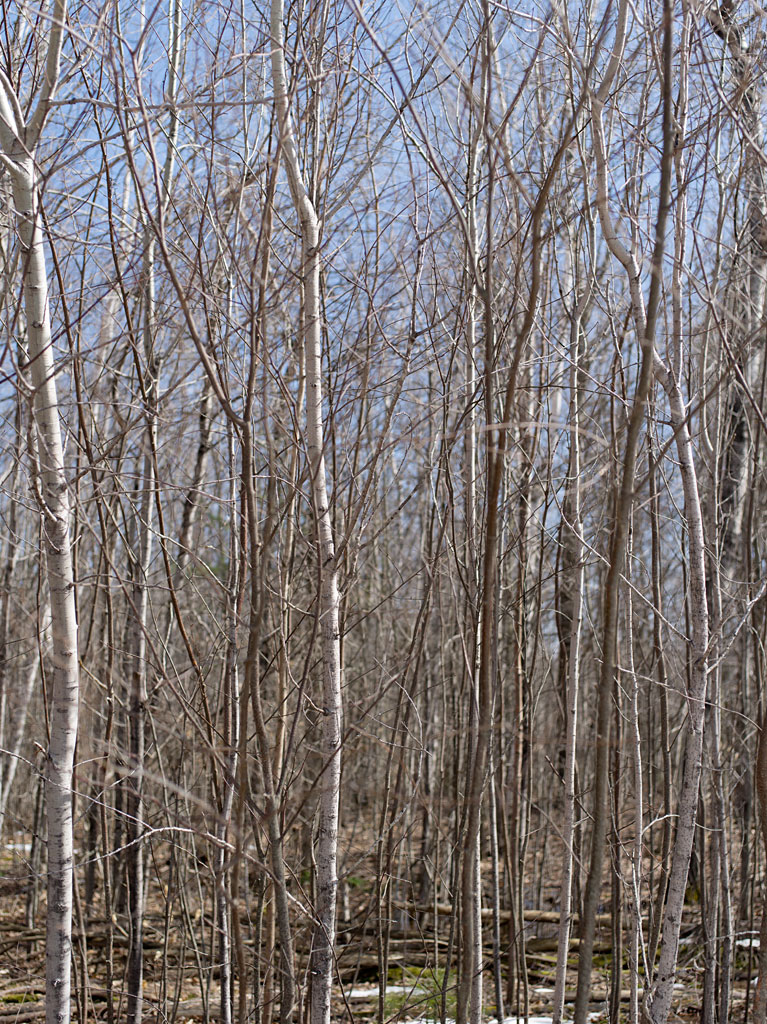 In April, heat and light come back to Maine. The forest is like an old man after a deep sleep, taking time to rise from the slumber. The humidity in the air gives a softness and transparency to the forest–light is much harsher in the dry winter air. We have a stand of saplings that are pioneering the open ground next to the forest. They are certainly happy to lose the weight of this winter’s ice storm. With their pliant wood and smooth bark, they seem to typify the spirit of spring. Click on the image for a larger view.
In April, heat and light come back to Maine. The forest is like an old man after a deep sleep, taking time to rise from the slumber. The humidity in the air gives a softness and transparency to the forest–light is much harsher in the dry winter air. We have a stand of saplings that are pioneering the open ground next to the forest. They are certainly happy to lose the weight of this winter’s ice storm. With their pliant wood and smooth bark, they seem to typify the spirit of spring. Click on the image for a larger view.
Old Man’s Beard—Usnea
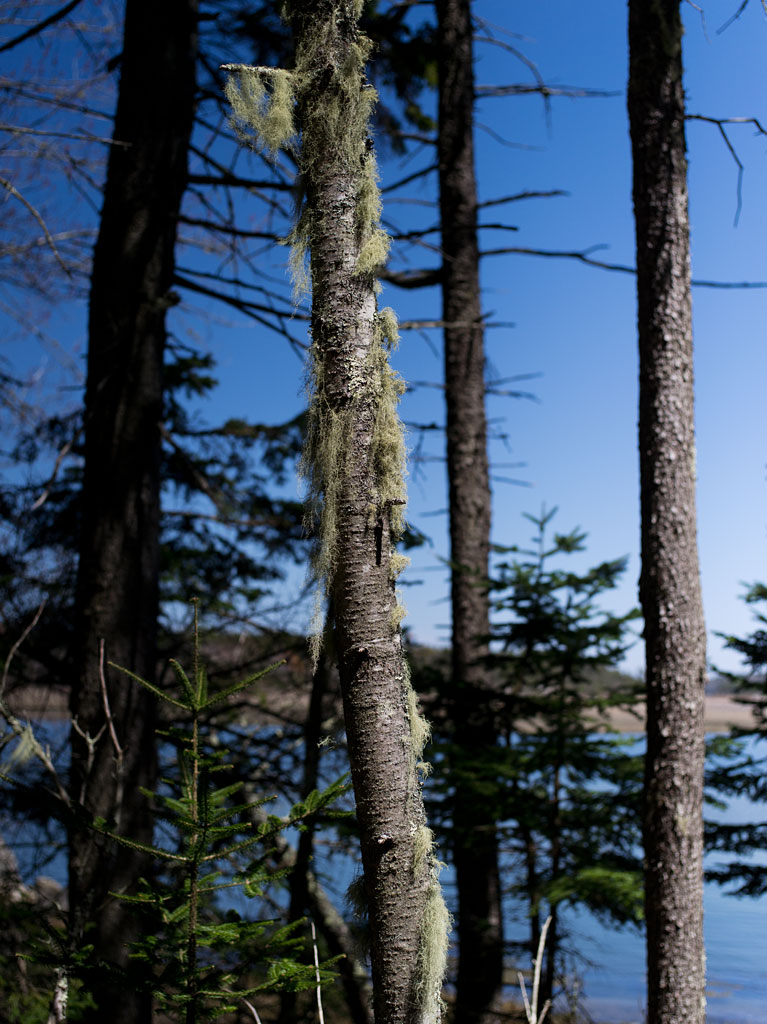 Usnea is a generic name for a rather broad group of lichen in the parmeliaceae family. Hanging from dying or sick trees like green cotton, it is mostly called by the common names of Old Man’s Beard or Beard Lichen. Although usnea indicates the symptoms, it is not the cause of the tree’s condition. Usnea is very sensitive to air pollution, especially sulfur dioxide, which can severely impede its growth.
Usnea is a generic name for a rather broad group of lichen in the parmeliaceae family. Hanging from dying or sick trees like green cotton, it is mostly called by the common names of Old Man’s Beard or Beard Lichen. Although usnea indicates the symptoms, it is not the cause of the tree’s condition. Usnea is very sensitive to air pollution, especially sulfur dioxide, which can severely impede its growth.
Usnea is believed to have antibiotic properties and was used like a sterile gauze for wounds. It is recommended to only use this plant externally. The lichen can also be used to create dyes for textiles, giving yellow, orange, green, blue, or purple hues. Click on the image for a larger view.
Spring at Marshall Point
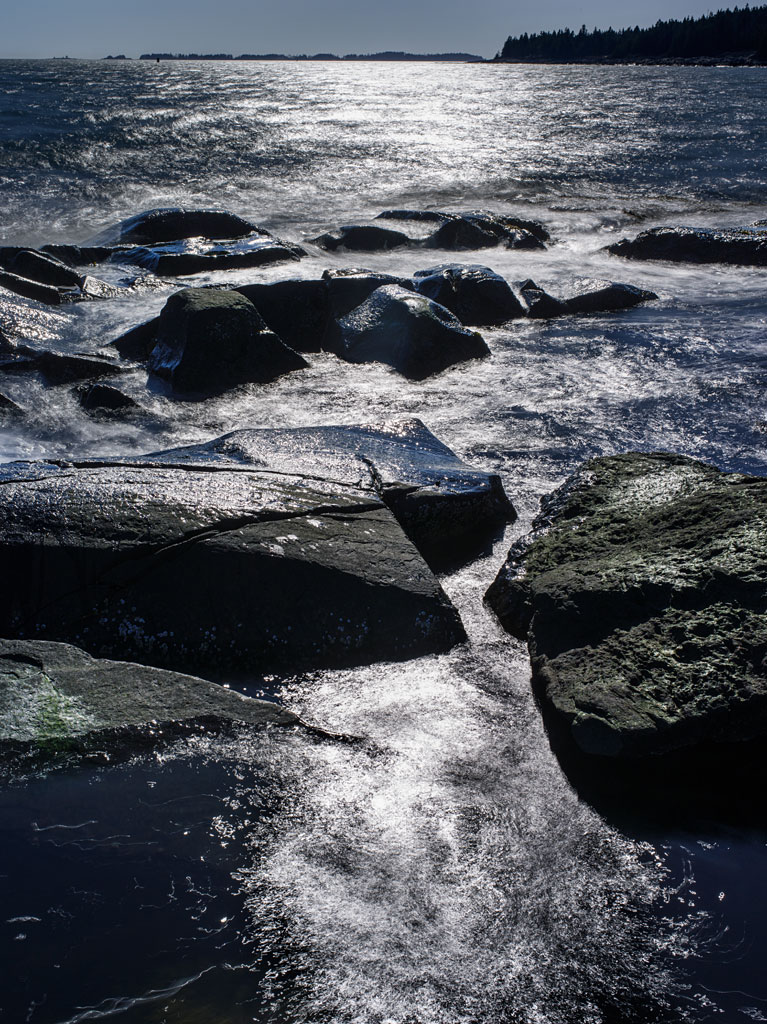 Spring has arrived. On Sunday, Naomi and I went out to Marshall Point at Port Clyde, Maine. The sky was cloudless and the world was filled with light–and heat; it was 52°F/11°C. While we still have snow on the ground at home, it has disappeared along the coast.
Spring has arrived. On Sunday, Naomi and I went out to Marshall Point at Port Clyde, Maine. The sky was cloudless and the world was filled with light–and heat; it was 52°F/11°C. While we still have snow on the ground at home, it has disappeared along the coast.
Marshall Point is the terminal of a peninsular that juts out into the Gulf of Maine on the western edge on Penobscot Bay. A string of islands continues beyond—Hupper Island and Thompson Island are on the horizon. The point is known for its lighthouse. Click on the image for a larger view.

